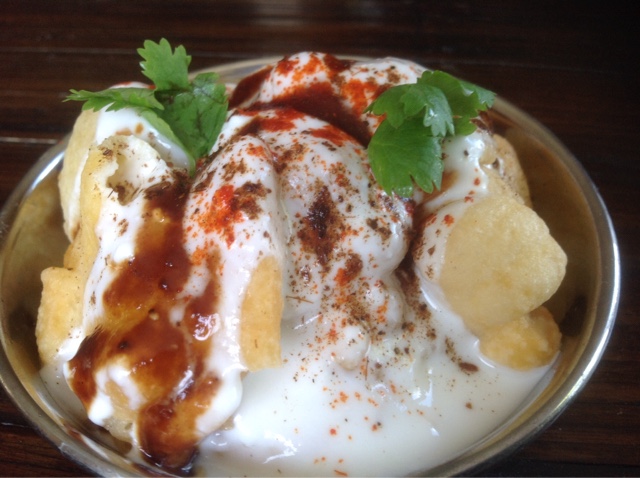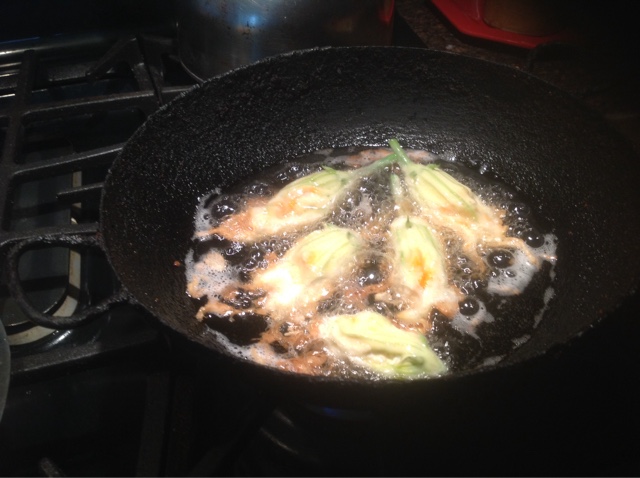Who can resist chaat? Not me. This slice of life from life in India, is resurrected ever so often in my kitchen. Chaat?? The uninitiated may ask what it is? This is an amalgam of street food, small plates eaten tapas style, all day long, in India. Spicy flavored water or paani, ladled into potatoes and crisp pooris, frankies or layered parathas rolled with beef, masala mini idlis, ragda pattice or potato tikki with creamy beans and dahi pakodi or crisp pakodas blanketed in yogurt and tamarind chutney. Then there is bhelpoori, sev poori, dahi batata poori....I skim the surface and also replicate some for dinner.
Geets is visiting. A bunch of old friends gather to reminisce and reinforce friendships that stand the test of time. Vimal, Lygia, MaryLou, Jen, Colleen and Anu laugh heartily, walk down memory lane fondly, over wine and food. A round of paani poori is disappears fast. Chutney naan triangles that Geets makes, are also polished off. Chaat lures them to the table. My menu has undergone numerous changes. I waffle between choices as Geets berates me for my indecision. We finally decide on frankies, ragda pattice and dahi pakodi. Leftover shrimp quiche is resurrected. Squash blossoms are filled with paneer and chaat masala and crisp fried, a true garden to table venture. We decide on mini masala idlis. They turn out into perfect small rounds with Geets' precise technique. She asks for an old favorite, dahi pakodi. I diligently oblige.
Th origin of this recipe goes back some forty years. It is a sensory flashback to my old workplace, Contemporary Arts and Crafts in Bombay. Along with the mid-morning chai break, a colleague who name eludes me, brings in these light, puffy fried morsels, swimming in yogurt, tamarind chutney and spices. We hungrily devour spoonfuls. She happily volunteers the recipe. Which now is cemented in my memory. These pakodi have emerged as a tea time treat, lunch on many occasions and as part of a chaat menu. What makes them appetizing is the light, fluffy fritter. Equal parts of flour and chickpea flour are whisked with a pinch of baking soda and water into a thick batter. They fry up into airy, pale brown crisp morsels. Once fried they get a short dunk in water. Squeezed dry, I arrange them on a platter. Covered with yogurt, chutney and roasted cumin powder, they resemble dahi vadas but without the heavy texture. On this hot day, a cool bite of dahi and pakodi is temptation enough.
DAHI PAKODI
Serves 4-6
3 heaping tablespoons Flour
3 heaping tablespoons Chickpea Flour or Besan
A pinch of Baking Soda
A pinch of Kosher Salt
1/3-1/2 cup Water
1 1/2 cups Canola Oil
1 cup Yogurt
1/4 cup Water
A large pinch of Kosher Salt
3-4 tablespoons Tamarind Chutney (Recipe Below)
1/2 teaspoon Chile powder
1/2 teaspoon roasted Cumin powder
Cilantro to garnish
Whisk flour, chickpea flour, baking soda and salt in a bowl.
Slowly whisk in water till you get a thick batter. Batter should be thick enough to drop spoonfuls into oil. This is an eyeball experience. If your batter is thin, add small but equal amounts of flour and chickpea flour to thicken. It should be of a thick, pouring consistency.
Heat oil in deep frying pan or wok over medium high heat. Drop a tiny bit of batter to test oil. It should sizzle and rise to the surface immediately. Drop a tablespoon of batter at a time into hot oil. Depending on the size of the frypan or wok you could fry 8-10 pakodi or fritters at a time. They should puff up immeadiately.
Fry pakodis till they are slightly golden, stirring often. Drain on paper towels and keep aside. Finish frying all the batter.
Whisk yogurt with 1/4 cup water and salt.
Put fried pakodis in a large bowl and cover with cold water for a minute. Take one pakodi and squeeze water out with your palms and keep aside. Working fast, do the same for all the pakodi.
Start assembly by placing pakodi in a shallow plate. Pour yogurt all over pakodi. Drizzle tamarind chutney over yogurt. Sprinkle with chile powder and cumin powder. Garnish with cilantro and serve it up.
NOTES
Tamarind Chutney
Makes 2 cups
1 cup Tamarind pulp
2 cups Water
1/2 cup Jaggery or Brown Sugar
A pinch of Kosher Salt.
Soak tamarind in water for 3 to 4 hours.
Squeeze pulp well and strain into a saucepan. You should have just the liquid. No pulp.
Add jaggery and salt and simmer on a medium flame for 15 minutes or until the sauce thickens.
Store in a glass jar or plastic container in the fridge for up to a month.
Eight ladies make a great deal of chatter. Platters are passed around. The room is filled with the sounds of friendship. Colleen's pista kulfi gives spicy mouthfuls a cooling antidote! Chaat is eaten standing on city sidewalks, table side in small cafes and in most Indian home kitchens. These small plates bring forth a flood of food-related memories. It transports us across the seas to a world we have left behind. And then brings us right back where we belong.











































